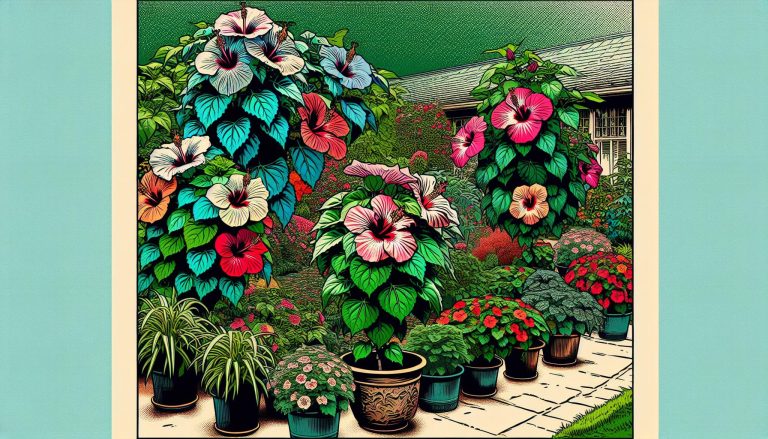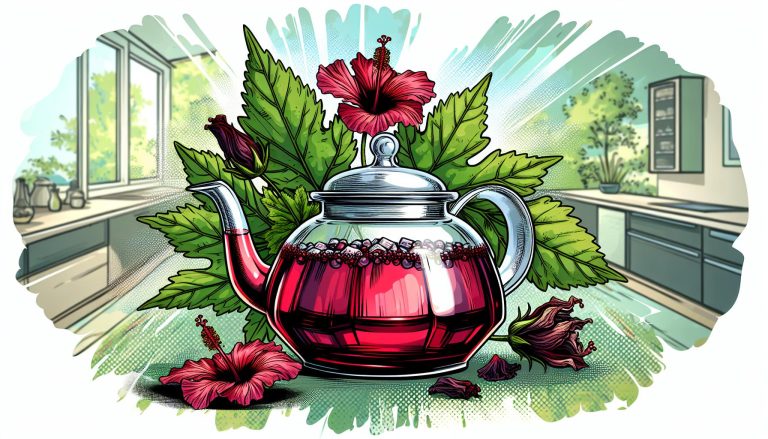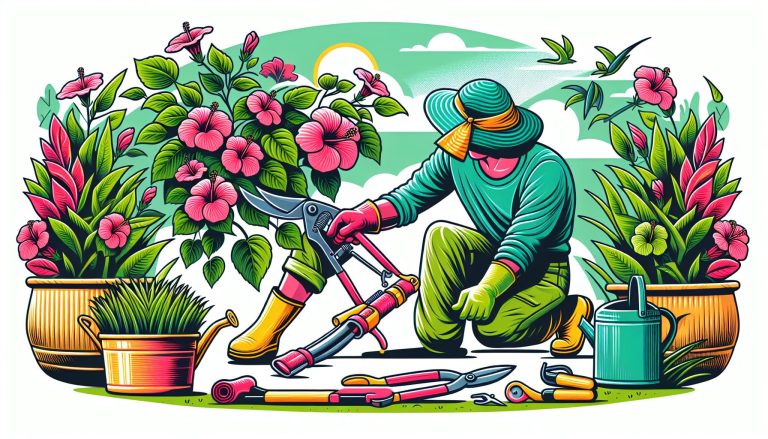Is Hibiscus Toxic to Dogs? What Pet Owners Need to Know
As a dog owner, I’m always on the lookout for potential hazards that could harm my furry friend. One question that often comes up is whether hibiscus plants are toxic to dogs. It’s a valid concern, especially if you have these beautiful flowers in your garden or are considering adding them to your landscaping.
Hibiscus plants are known for their vibrant, showy blooms that add a tropical flair to any outdoor space. But when it comes to our canine companions, it’s crucial to understand the potential risks associated with these plants. In this article, I’ll explore the topic of hibiscus toxicity in dogs and provide you with the information you need to keep your pet safe.
Understanding Hibiscus and Its Varieties
Hibiscus plants come in a diverse range of species and varieties, each with unique characteristics. I’ll explore the most common hibiscus species and differentiate between ornamental and wild varieties to provide a comprehensive understanding of these plants.
Common Hibiscus Species
Hibiscus plants belong to the Malvaceae family and include over 200 species. The most popular species include:
- Hibiscus rosa-sinensis (Chinese hibiscus): Vibrant, tropical flowers in various colors
- Hibiscus syriacus (Rose of Sharon): Hardy shrub with late-summer blooms
- Hibiscus moscheutos (Rose mallow): Large, showy flowers native to North America
- Hibiscus sabdariffa (Roselle): Known for its edible calyces used in teas and jams
- Hibiscus arnottianus (Hawaiian white hibiscus): Native to Hawaii with fragrant white flowers
Each species has distinct characteristics, growth habits, and potential effects on dogs.
Ornamental vs. Wild Hibiscus
Ornamental hibiscus plants:
- Cultivated for gardens and landscaping
- Often hybrid varieties with enhanced flower size and color
- Generally less toxic than wild species
- Examples: Chinese hibiscus, Rose of Sharon
Wild hibiscus plants:
- Grow naturally in various habitats
- More likely to contain higher concentrations of potentially harmful compounds
- Include species like marsh hibiscus and swamp rose mallow
- Often have medicinal properties used in traditional remedies
Understanding the differences between ornamental and wild hibiscus helps identify potential risks to dogs. Ornamental varieties typically pose less danger, while wild species require more caution due to their potentially higher toxicity levels.
The Toxicity of Hibiscus to Dogs
Hibiscus toxicity in dogs varies depending on the species and parts of the plant consumed. While some hibiscus varieties are generally safe, others can cause mild to moderate health issues in canines.
Potentially Harmful Parts of the Plant
The leaves, flowers, and stems of certain hibiscus species contain compounds that can be toxic to dogs. These parts contain chemicals like tannins, saponins, and cyanogenic glycosides, which may cause adverse reactions when ingested. The concentration of these compounds is typically higher in wild hibiscus varieties compared to ornamental ones. Ingestion of large quantities of hibiscus plant material increases the risk of toxicity in dogs.
Symptoms of Hibiscus Poisoning in Dogs
Dogs that consume toxic hibiscus parts may exhibit various symptoms:
- Gastrointestinal distress: Vomiting, diarrhea, and loss of appetite
- Lethargy and weakness
- Abdominal pain or discomfort
- Drooling or excessive salivation
- Difficulty swallowing
- Skin irritation or rashes (if contact occurs)
- In severe cases: Dehydration, electrolyte imbalances, or changes in heart rate
The severity of symptoms depends on the amount and type of hibiscus ingested, as well as the dog’s size and overall health. If you suspect your dog has consumed hibiscus, monitor them closely and contact your veterinarian immediately for guidance.
Factors Affecting Hibiscus Toxicity
Several factors influence the severity of hibiscus toxicity in dogs. Understanding these factors helps assess the potential risk and determine appropriate actions if ingestion occurs.
Amount of Ingestion
The quantity of hibiscus ingested directly impacts toxicity levels in dogs. Small amounts typically cause mild symptoms, while larger quantities increase the risk of severe reactions. A dog nibbling on a few petals may experience minor digestive upset, but consuming multiple flowers or leaves can lead to more serious complications. The concentration of toxic compounds varies across different parts of the plant, with leaves often containing higher levels than flowers.
Dog’s Size and Health Condition
A dog’s size and overall health significantly affect its susceptibility to hibiscus toxicity. Smaller dogs face a higher risk due to their lower body weight, as toxic compounds can have a more concentrated effect. A large dog may tolerate a small amount of hibiscus with minimal symptoms, while the same quantity could cause severe reactions in a toy breed. Dogs with pre-existing health conditions, particularly those affecting the liver or kidneys, are more vulnerable to the toxic effects of hibiscus. Older dogs or those with compromised immune systems may also experience more severe symptoms or have difficulty processing the plant’s compounds.
Safe Alternatives to Hibiscus for Dog-Friendly Gardens
I’ve researched and compiled a list of safe alternatives to hibiscus for dog owners who want to create beautiful, pet-friendly gardens. These options allow you to enjoy colorful blooms without worrying about potential toxicity to your canine companions.
Non-Toxic Flowering Plants
For dog-friendly gardens, I recommend these non-toxic flowering plants:
- Sunflowers: Bright, cheerful blooms that are safe for dogs
- Marigolds: Vibrant orange and yellow flowers that repel pests
- Petunias: Available in various colors, easy to grow, and dog-safe
- Zinnias: Colorful, long-lasting flowers that attract butterflies
- Snapdragons: Tall, eye-catching blooms in multiple hues
- Cornflowers: Blue, pink, or white flowers that are safe for pets
- Pansies: Delicate, multicolored flowers that thrive in cool weather
These plants provide a range of colors, sizes, and blooming seasons, ensuring your garden remains attractive and safe for your dogs year-round.
Creating a Pet-Safe Outdoor Space
To create a dog-friendly garden, I suggest:
- Raised beds: Elevate plants to prevent easy access by curious dogs
- Fencing: Install barriers to separate toxic plants from pet-accessible areas
- Mulch carefully: Use pet-safe mulch options like coconut husks or pine needles
- Avoid chemicals: Use organic fertilizers and pest control methods
- Provide shade: Create shaded areas for dogs to rest and cool off
- Water features: Include a shallow water source for dogs to drink and play
- Sturdy plants: Choose robust plants that can withstand playful dogs
- Designated play areas: Create specific zones for dogs to dig and explore
By implementing these strategies, you’ll create a beautiful, safe outdoor space that both you and your canine companions can enjoy.
What to Do If Your Dog Eats Hibiscus
If you suspect your dog has eaten hibiscus, it’s crucial to act quickly and calmly. The following steps will help you address the situation effectively and ensure your pet’s safety.
Immediate Steps to Take
Remove any remaining plant material from your dog’s mouth and surrounding area. Rinse your dog’s mouth with water to remove any residual plant particles. Monitor your dog closely for symptoms such as vomiting, diarrhea, lethargy, or difficulty breathing. Collect a sample of the ingested plant for identification if possible. Keep your dog calm and comfortable while observing their behavior and symptoms.
When to Contact a Veterinarian
Contact your veterinarian immediately if your dog shows severe symptoms like persistent vomiting, diarrhea, or signs of distress. Call the vet if your dog has ingested a large amount of hibiscus or if you’re unsure about the type of hibiscus consumed. Seek professional advice if your dog has pre-existing health conditions that may complicate their reaction to hibiscus ingestion. Consult your vet if symptoms persist or worsen over time, even if they initially seemed mild.
Preventing Hibiscus-Related Incidents
To keep dogs safe from potential hibiscus-related issues, it’s crucial to focus on prevention. I’ll explore effective strategies for training your dog and securing your garden to minimize risks associated with hibiscus plants.
Training Your Dog
Training is essential for preventing hibiscus-related incidents. I recommend teaching the “leave it” command, which helps dogs ignore objects or plants they shouldn’t touch. Start with low-value items and gradually increase difficulty. Use positive reinforcement techniques, rewarding your dog with treats and praise when they successfully avoid the hibiscus. Consistency is key – practice regularly in various settings, including near the hibiscus plants. Additionally, teach boundary training to create “off-limits” areas in your garden. This involves establishing clear boundaries and rewarding your dog for respecting them. With patience and persistence, these training methods significantly reduce the risk of your dog ingesting hibiscus.
Securing Your Garden
Creating a secure garden environment is crucial for preventing hibiscus-related incidents. I suggest installing sturdy fencing around hibiscus plants or the entire garden area. Use materials like chicken wire or garden netting to create physical barriers. For potted hibiscus, elevate them on high shelves or stands out of your dog’s reach. Consider using deterrent sprays on and around hibiscus plants – these non-toxic solutions have unpleasant tastes that discourage dogs from chewing. Regularly inspect your garden for fallen hibiscus flowers or leaves and promptly remove them. Provide alternative, dog-safe plants for your pet to explore, redirecting their attention away from hibiscus. By implementing these security measures, you’ll create a safer outdoor space for your canine companion while still enjoying the beauty of hibiscus plants.
Conclusion
While hibiscus can be beautiful it’s crucial to prioritize our dogs’ safety. By understanding the risks identifying safe alternatives and implementing preventive measures we can create a pet-friendly garden that’s both stunning and secure. Remember to always stay vigilant monitor your dog’s behavior and contact a vet if you suspect hibiscus ingestion. With the right knowledge and precautions we can enjoy the beauty of our gardens while keeping our furry friends safe and healthy.







